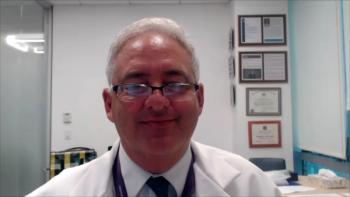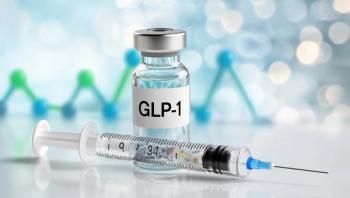
The Economics of Resistant Pathogens and Antibiotic Innovation
Pharmaceutical Innovation Has Driven Vast Improvements In Health
The last 70 years have seen an explosion in pharmaceutical and biotechnological innovation that has improved and lengthened the lives of millions across the globe. In the early period of drug development following World War II, several pharmaceuticals were introduced to treat various communicable and infectious diseases. More modern innovations have created agents that treat a range of chronic conditions such as tuberculosis and viral hepatitis. Many of these drugs provide a direct cure or protection against otherwise deadly diseases such as bacterial pneumonia and HIV/AIDS, while others help control the symptoms of, and prevent complications from, common conditions such as pharyngitis, otitis media, and urinary tract infections.
Costs of Innovation
While the pharmaceutical breakthroughs over the last half-century have improved the lives of millions, the development costs have been substantial. Pharmaceutical markets generally are characterized as having huge up-front research and development (R&D) investment and relatively miniscule marginal cost. This leaves discovering firms susceptible to competitors who could manufacture the same or similar compound without repeating costly and risky R&D. Due in part to the high risk of these investments and the time it takes to move from discovery
to regulatory approval, some researchers estimate that the total capitalized cost of developing a new drug exceeds $800 million (in 2000 dollars).1 Firms would not undertake such an investment if others could free-ride on the knowledge. In an attempt to promote the social desire for innovation and to provide suitable financial incentives for companies to develop novel drugs, national governments and international laws offer exclusivity rights for discovering firms under various patent systems.
The Special Case of Antibiotics Social Value
Antibiotic drug classes, which include antibacterials, antimicrobials, and antifungals, have been developed to treat diseases caused by a wide range of infectious agents. Due in part to the tremendous health benefits provided by antibiotics and their unique clinical aspects, this highly valued pharmaceutical class warrants special consideration. In the years following the widespread adoption of penicillin starting in the 1940s, antibiotics had a significant impact on reducing mortality associated with many of the most devastating diseases in human history, including bacterial pneumonia, bloodstream infections, tuberculosis, and childhood diseases such as scarlet fever and diptheria.2 More recently, as a result of the availability of antibiotics, neither the United States nor British militaries reported a single case of gangrene—a highly fatal infection prior to World War II—during the entirety of the Iraq War.3 In addition to curing many otherwise fatal infections, antibiotics reduce morbidity by decreasing hospitalizations and major clinical complications. For example, antibiotics reduce the risk of amputation from diabetic ulcers, which are a leading cause of amputation. Moreover, antibiotics used as prophylaxis have made many surgical procedures possible that were otherwise too risky to perform.
From a cost-effectiveness perspective, the value of antibiotics is highly favorable compared with many other interventions. Antibiotics to treat (full cure) a life-threatening or limb-threatening pathogen usually cost between $2000 and $3000.4 This compares favorably with other therapeutic agents that often provide a benefit—but no cure—for disorders such as cancer, multiple sclerosis, rheumatoid arthritis, lupus, and rare/orphan disorders. These therapeutics often range in cost from $100,000 to $300,000.5 The value of antibiotics also compares favorably to the treatment of other infectious diseases such as the hepatitis C virus, where new therapies cost more than $60,000.6
Resistance
The emergence of pathogens that are resistant to antibiotics creates unique scientific, clinical, and economic challenges. While the use of most medications does not have an impact beyond the individual patient using it, some drugs, such as vaccines, actually provide benefits to nonusers. Utilization of vaccines generates “herd immunity,” indirectly protecting the unvaccinated.
Use of antibiotics actually has the potential to create the opposite problem. The fact that the targets of antibiotics are independent, living organisms (as opposed to enzymes or cell receptors) that have the potential to adapt to environmental stressors through natural selection is what separates this class of agents from other pharmaceuticals.
Appropriate Use
Despite the specter of resistance, existing pathogens necessitate antibiotic use. However, the potential of future resistance impacts the definition of appropriate use. Common definitions of appropriate use include consideration of clinical appropriateness (ie, clinical benefit exceeds clinical risk) and economic appropriateness (ie, clinical benefit exceeds clinical risk and cost).
From a societal perspective, clinical risk would include the impact of use on future resistance. For this reason, the greater the impact of use on future resistance, the lower optimal utilization should be.
Yet individual patients and providers may not fully consider the societal cost associated with resistance. As a result, utilization may be greater than what is considered optimal, with factors such as diagnostic uncertainty and demand from patients contributing to excess use. A 2013 Centers for Disease Control and Prevention (CDC) report states that perhaps half of all antibiotics used on humans are unnecessary, with other work suggesting that around one-fourth of multispectrum antibiotics are prescribed for conditions that rarely indicate their use, such as viral upper-respiratory infections.7,8 This is likely exacerbated by patients pressuring caregivers for antibiotics (or other pharmaceutical solutions), with an expectation that if someone shows up sick to the doctor, they should leave with a prescription.9 Existing evidence suggests that this overuse may accelerate resistance. Each year in the United States alone, over 2 million people are believed to develop a resistant infection, with over 23,000 dying as a direct result. The US experience is in no way unique. India has seen a precipitous increase in the incidence of resistant tuberculosis cases, even though antibiotics are often available without a prescription.8,10
Globally, multidrug-resistant (MDR) tuberculosis alone is estimated to infect around 630,000 people.11 While resistant pathogens first appeared almost exclusively in healthcare facilities, there has been a recent increase in community-acquired infections. The rise in resistance not only threatens to increase the numbers of untreatable infections that may lead to serious disability or death, but also threatens to limit the potential of many other medical procedures. Both surgical and nonsurgical procedures that are currently possible due to effective prophylaxis may become no longer possible due to the risk of infection. Finally, the economic costs of resistance are substantial and growing.12
For instance, direct costs of treatment are estimated at $20 billion per year in the United States alone, with indirect costs such as lost wages believed to be underestimated at $35 billion per year. These costs will be even higher as future resistance renders more and more antibiotics ineffective. Overuse is not the only problem with antibiotic prescribing—there are also substantial clinical and economic costs associated with underuse of appropriate antibiotic therapy. Unlike other scenarios in which (in the absence of financial restraints) clinicians provide the most effective treatment, they often prescribe antibiotics that are known to be less effective in order to preserve the potency of alternative, more powerful drugs.13 One study suggests that clinicians avoid using new, more powerful antibiotics in the face of resistant pathogens between 58% and 70% of the time, often citing as their reason that they want to preserve the use of agents that are seen as very effective against resistant pathogens.
Other evidence suggests that cost concerns play a large part in drug choices when treating infectious diseases, with 87% of hospital providers citing cost reduction as a major driver of antibiotic steward programs.14 Regardless of the underlying cause, a large body of research substantiates the belief that when an appropriate antibiotic regimen is delayed or not started, negative clinical consequences, including preventable death, result.15-18 Hesitancy to use the most effective medication due to concern for promoting resistance creates a unique and somewhat paradoxical circumstance, as this restraint reduces the financial incentives for the development of novel agents.
Policies intended to limit use and minimize resistance, such as those restricting the most effective agents to the cases in which less effective agents fail to bring about a cure, are possibly valuable, but they must be balanced with the competing concern of underutilization. The key question is defining the optimal utilization rate. One approach, while hypothetically extreme, would be to ignore the resistance issue and presume that innovation would always develop effective new agents.
This is known as the “private best” scenario, where treatment decisions only reflect the benefit directly to the patient and associated costs of treatment. Another option, which would perhaps qualify as the other extreme, would be to fully incorporate the impact of utilization on resistance, and presume no future innovations. In this case, utilization would be too low because the cost of resistance is overstated if future innovations are ignored. Thus, determining “appropriate use” of antibiotics will always be controversial, since 2 critical variables—the contribution of use to resistance and the development of agents to overcome that resistance—are impossible to precisely estimate.
Since the development of resistance is a reality, we must continually innovate. In fact, the history of antibiotic discovery has mimicked a cat-and-mouse game, with more powerful drugs being developed to treat the very pathogen that a previous antibiotic precipitated. An example of this progression is demonstrated by the development of methicillin-resistant staphylococcus aureus (MRSA), an organism that was effectively treated by vancomycin, until vancomycin-resistant staphylococcus aureus (VRSA) emerged. Now, multidrug-resistant pathogens are rendering even powerful antibiotic combinations ineffective. While it is clear that overuse-related resistance is a serious concern, the documented underuse of the most effective therapy in order to “preserve”
future effectiveness represents another important gap between actual and ideal practice. Combating resistance should clearly involve reducing use in cases where it does not meet the private best standard. Further reductions in use intended to slow resistance must reflect both the impact of reduced use on the individual patient and the impact of reduced use on the incentive to innovate. The social best level of use would incorporate the impact of use on resistance while also adjusting for the potential for future innovation. Fortunately, the discovery of new antibiotics has, for the most part, kept up with resistance—although this need not always be the case.
Existing Regulatory Approaches to Encourage Innovation and Prevent Resistance
During the 1990s, the Institute of Medicine, the Government Accountability Office, and the Office of Technology Assessment all released reports on the growing problem of resistant pathogens, followed in the 2000s by a series of legislative bills attempting to address the concern. More recently, the US GAIN Act attempted to decrease the costs and time of bringing antibiotics that treat serious or life-threatening conditions to market by extending exclusivity and earmarking such antibiotics for expedited US Food and Drug Administration (FDA) review.19,20 Major public health organizations around the world have also attempted to combat the specter of resistance through surveillance, most notably via the SENTRY Antibiotics Surveillance Program.
Global call for greater antibiotic innovation. Many public health agencies around the globe see antibiotic resistance as a major threat to public health. In the United States, the FDA currently cites resistance as a major concern, while a CDC report issued in March 2014 stated that a lethal strain called cabapenem-resistant enterobacteriaceae (CRE) had been on the rise in hospitals.8,21 In November 2013, a Reuters report stated that the last line of antibiotics used to fight CRE was now facing a resistance rate of over 25% in 8 European Union countries.22 The United Kingdom (UK) has ranked antibiotic resistance as a top national health policy concern and released a 5-year strategy to address the issue, which the chief medical officer (the most senior medical advisor at the UK’s National Health Service) is calling a “catastrophic threat.”23
Stymied Growth in New Approvals Paradoxically, at the same time that the cost and health impact of resistance is rising, the approval of new antibiotics has decreased precipitously over the past 30 years. While the scientific difficulty in developing new antibiotics may be increasing as microbes become resistant to an ever-increasing array of treatments, the most commonly cited explanation of the decrease in approval is that the market lacks sufficient economic incentives.24
As of 2013, several major pharmaceutical companies have either discontinued or considerably scaled back their antibiotic practices. And among the drugs that are in the pipeline, very few seem likely to target resistant pathogens specifically.25-28 From 1983 to 1987, 16 new antibiotic agents entered the market versus 2 that came to market from 2008 to 2012.29 The reduction in financial incentives to innovate stems in part from stewardship efforts to reduce utilization of novel antibiotics.
As a result, new drugs must compete for a relatively small slice of the total antibiotic market. In addition, antibiotics may face a shorter market life span due to resistance rendering the drug less effective over time. Since the current market is dominated by generics that are currently effective at treating many pathogens, a manufacturer must also consider that there is substantial competitive price pressure for any new entrant. The relatively short prescription length of 4 to 6 days also poses a problem, as patients (and payers) may balk at the relatively high price of a single antibiotic dose compared with the price of a single dose of a medication that is taken daily.
Policies aimed at addressing the gap in innovation for “orphan” disorders over the last 30 years provide a useful comparison to the current antibiotic situation. Drugs that treat rare orphan disorders, such as enzyme replacement therapy for Gaucher’s disease, face a substantial quantity restraint. Prior to the 1980s, drug manufacturers saw orphan disorders as offering a comparatively low potential return on investment when the alternative was investing in a drug with a larger user population. Acknowledging the gap in innovation for orphan disorders, the United States passed the Orphan Drug Act of 1983, which conferred several benefits on manufacturers conducting research in qualified diseases, including tax advantages and enhanced patent protection.
Changing the incentives for innovation. Incentives to innovate depend on profit relative to R&D cost; several policy options should be considered to ensure access to effective antibiotic therapies.
Research Subsidies One approach would be to subsidize R&D for antibiotic innovation. There are several drawbacks to this strategy, most notably that research subsidies are difficult to target. Simple costbased subsidies (eg, paying a set percentage of R&D cost) would encourage inefficiency in research, just as cost-based reimbursement in healthcare encouraged inefficiencies in care delivery.
Subsidies would need to be targeted toward the most promising areas, yet such targeting is difficult given the uncertainty of R&D. Despite these concerns, many policies have been aimed at reducing the costs associated with drug discovery by trying to expedite the regulatory approval process, and will likely encourage more focus on this area. Whether these current incentives are enough to stimulate innovation is yet to be seen.
Extended Market Exclusivity An alternative approach is to encourage innovation by offering extended market exclusivity, thus allowing manufacturers to maintain high prices for a longer period. The GAIN Act, for instance, extends the market exclusivity period from 5 years to 10 years for certain antibiotics.21 However, the extension of exclusivity may not be enough to overcome the downward pressure on utilization and prices, especially if the effective life span of new antibiotics is shortened by the development of resistant pathogens.
Increase Reimbursement Given the concern over resistance, expanding the market by increasing utilization (above the societal best level) is not an appropriate strategy to improve innovation incentives. In fact, because of the relatively small pipeline of antibiotics and the increase in resistant pathogens, there is great concern that new drugs will not keep up with developing pathogens. If this turns out to be the case, it will put even more burden on policy makers and practitioners to reduce utilization of newer antibiotics. Under the assumption that policies will continue to put downward pressure on the utilization of novel antibiotics, the only remaining mechanism to incentivize innovation is to increase price. Smaller markets of higher-priced drugs have been successful in certain specialty medication areas, such a smaller markets. The added expense would be incurred on a small number of patients and thus may not add significantly to the overall premiums.
Moreover, given the cost-effectiveness of these agents when used appropriately—even when priced very high—a strategy of limited use at a higher price would increase the value generated by the healthcare system. There are already a few examples of policies aimed at increasing the reimbursement for new antibiotics. In the United States, the New Technology Add-on Payment (NTAP) program introduced in 2001 provides a mechanism for new medical developments to be paid separately to inpatient diagnosis-related groups (DRGs).30 Since DRGs bundle payments for an admission into 1 prospective payment, the introduction of new (and expensive) technologies is discouraged, even if the services provide substantial value.
Carving out an additional payment reduces a hospital’s incentive to minimize costs associated with new technologies thereby reducing the price pressure on manufacturers of the technology.
In 2012, Optimer Pharmaceuticals Inc obtained approval for one of its antibiotics (Dificid) to be covered under NTAP. The designation was renewed in 2013. Together, these actions suggest that other antibiotic manufacturers may be able to receive the same add-on payment. Other federal programs could work in a similar way. For example, new antibiotics could be excluded from 340B pricing. The 340B Drug Discount Program requires drug manufacturers to provide outpatient drugs to certain health facilities, such as critical access hospitals, at significantly reduced prices. Excluding novel antibiotics from this requirement would decrease the price pressure on manufacturers and create more economic incentive for potential developers that hope to see a
promising return on investment.
Conclusion
There is no magic bullet to guarantee innovation in antibiotics development. It is difficult to determine whether R&D incentives or reducing the costs of bringing new antibiotics through expedited FDA review will be sufficient. Likely, the most effective method would be to simply allow higher prices. While this could increase the total costs to payers, a strategy of limited use at a higher price could increase the value generated by the healthcare system. Moreover, an increase in price must be coupled with controls to protect against overutilization, which could exacerbate problems of resistance.
Simultaneously, strategies to reduce underutilization, which could lead to adverse health outcomes for patients, will be important also. Quality measures that capture both overuse and underuse will be necessary to promote the optimal utilization of these highly valuable medications. The ultimate policy goal is to ensure that antibiotics are both used appropriately, with the right patients receiving the right medication at the right time, and that the world has a steady stream of future antibiotics that effectively treat the resistant organisms that will inevitably emerge.
Newsletter
Stay ahead of policy, cost, and value—subscribe to AJMC for expert insights at the intersection of clinical care and health economics.















































